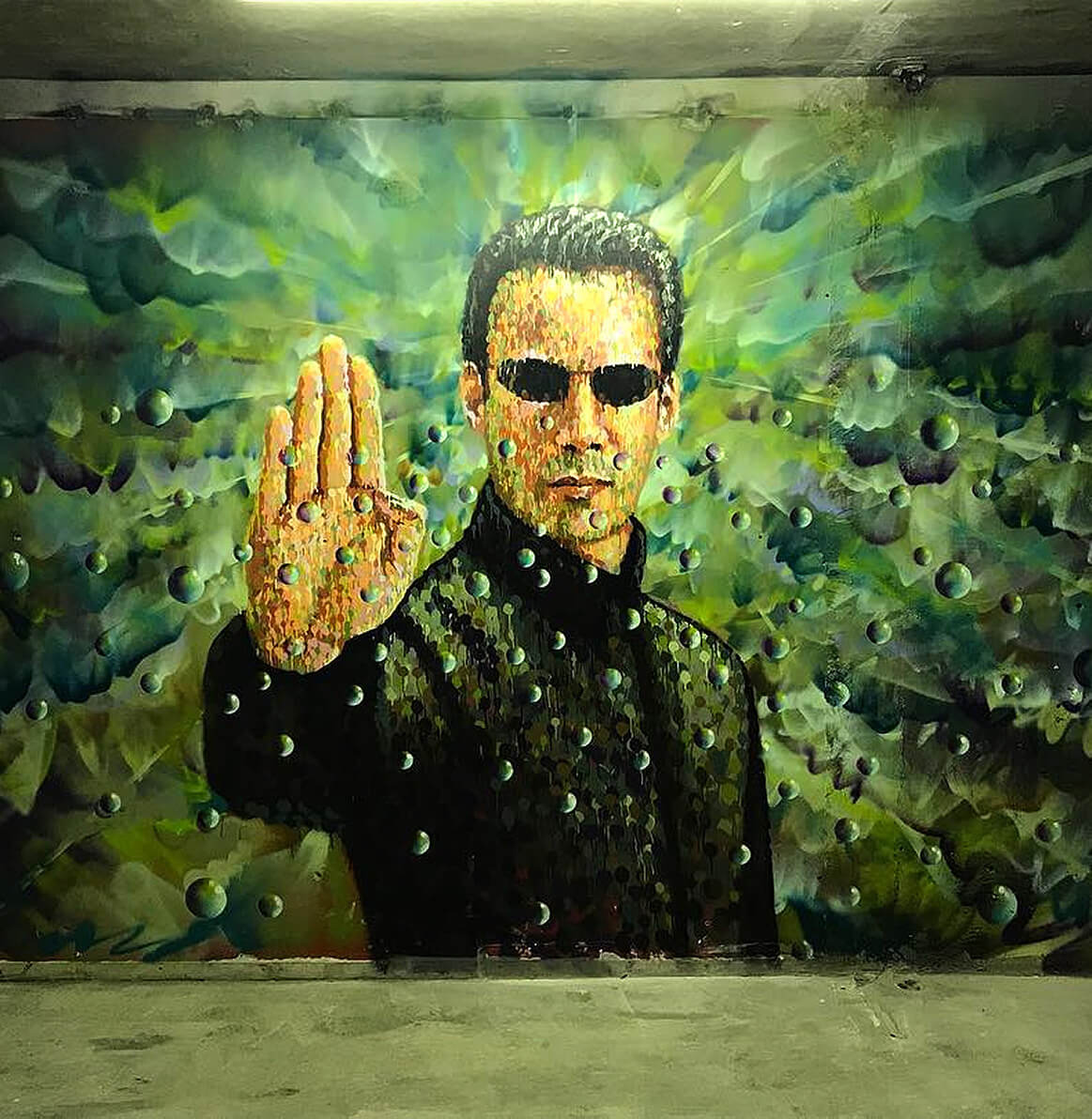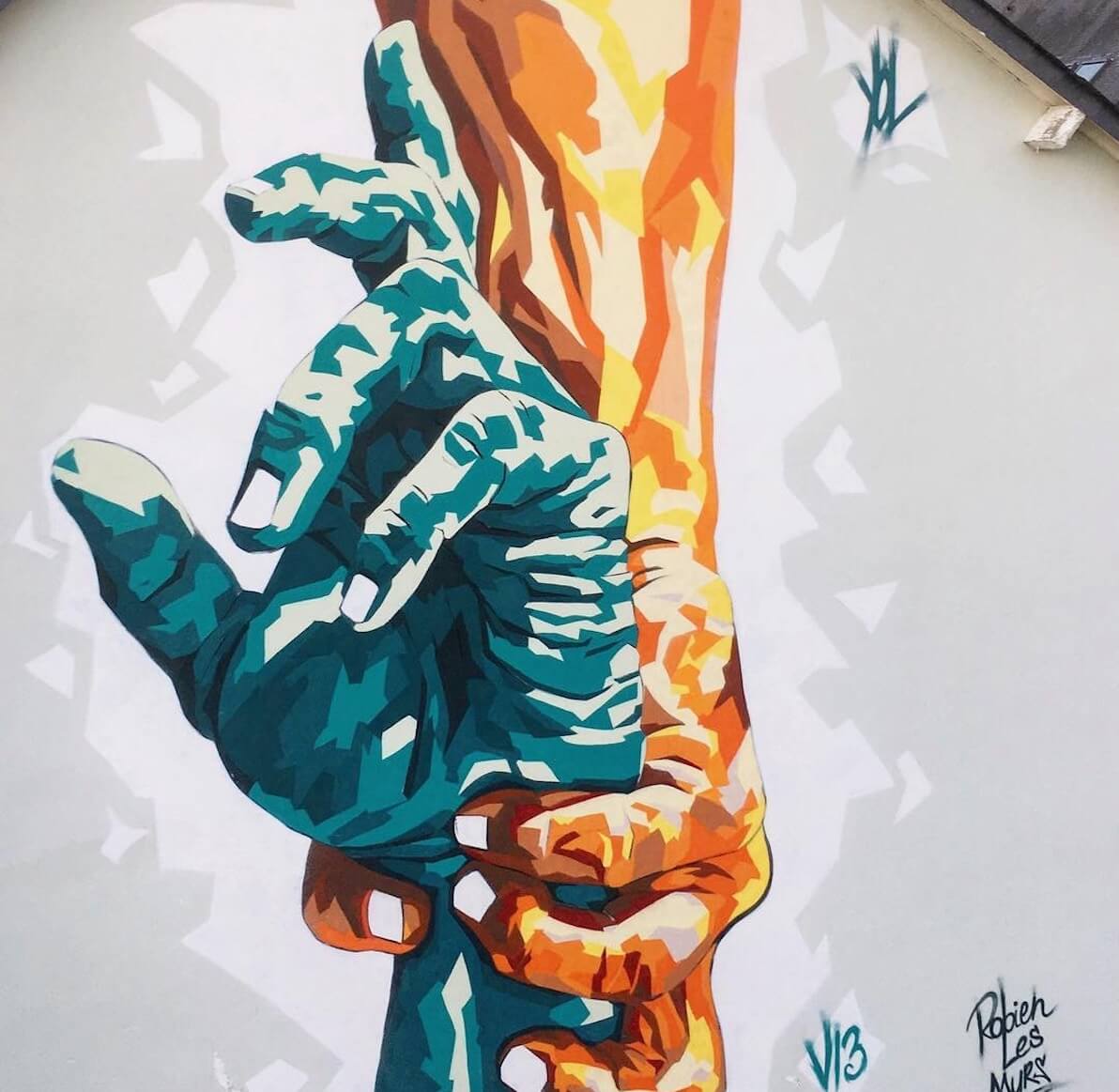Urban Wonderland
Media hub Hiya brings urban culture to the public not just via online content but through monthly events IRL, too, aiming to bridge the gap between the digital and real world.

Graph by @akajimmyc
You might not yet have heard of Hiya, but once you come across their new website, launching this October, you’ll find yourself falling down a rabbit hole. Currently under development, it promises to be something of a hidden gem in a digital world, where analogue creativity springs up on your computer screen amongst the overwhelming reams of underwhelming content, much in the same way that a multi-coloured mural might stand out in the concrete jungle between mundane office buildings, or a flower sprouts up between the cracks in the pavement.
Founded by thirty-something duo Abdallah Slaiman and Jean-Christophe Filippini three years ago, Hiya is an online media whose mission is to promote urban culture—currently in Paris and then to be expanded elsewhere in France and other capital cities worldwide. The two entrepreneurs curate a selection of content from street artists, break dancers, beatboxers, rappers and skaters to feature on their website and social media channels, and also host monthly events bringing the work of these creative forces to an audience IRL.
Their initial project stemmed from this very concept of bridging the gap between the screen and reality. “”That was our aim: to recreate a link with real life, based on the observation that everyone was shutting themselves away in a virtual world, on social media,” Slaiman explains. They work with artists to create content that exists both online and in the realm of the real, whether in the street, for brands, exhibited at events or in conjunction with institutions. “The idea is to create a link between the artist and the public,” he says.

Graph by @yol_insta
As much as they use—and indeed embrace—the digital world as part of their business model, they are aware of its limitations and are trying to find solutions to overcome them. Slaiman points out in his softly-spoken tones, “As humans, we are analogue and not digital.” For street artists, who often don’t belong to traditional galleries, social media is a way to connect with the public. As Filippini says, “Instagram is the main media for broadcasting this kind of artist to a wide public but there is no ‘lived’ experience, no real transmission.” And that’s the gap they hope to bridge by hosting their events—the first of which attracted a crowd of 1000 people—and by bringing a community together around this common interest in urban culture.
Another disparity they hope to balance is that of online influence versus genuine reach. Slaiman laments that marketing directors have now become statisticians, taking nothing more than the number of followers a person has into account, “while influence can’t be measured only by that—much less so when it comes to artistic influence, which is the real influence as far as I’m concerned.” Consequently, they hope to level out the difference between the number of followers an artist has and the veritable impact of their work. Filippini states their intention clearly: “There are many artists who are very well known on Instagram but that doesn’t mean they sell their work. It’s this distortion that we are trying to level out.”
As such, Hiya also includes an e-shop in its offer, selling works of art such as original pieces, prints and customised skateboards. “This enables an artist to be able to make a living from their art and to continue to be able to create and it enables people to acquire a work of art and learn about it,” explains Slaiman. While the original works may be of a considerable cost, screen prints are at a more accessible price point with the aim of enabling people to be able to purchase their first work of art. “And that creates a link: it’s a really strong transmission to be able to have a piece of art in your home,” Filippini goes on to say.
It seems fitting that the young French company—comprised of the two founders and three other team members—is based at Station F in Paris, a vast matte-grey concrete setting which lays claim to being the largest start-up campus in the world, and is punctuated with big, bright, bold works of art, mirroring, in many ways, the relationship between street art and the urban setting it inhabits.
Indeed, street culture is in the midst of becoming increasingly mainstream, a big business to be commodified in order to be sold to the masses as something “cool”. Hiya, by contrast, aims to remain authentic, cultivating a community of followers linked directly to the work of the artists. “Our idea is to have a strong community to safeguard the freedom the artists have, allowing them to be able to express themselves without being constrained by brands who see the public as a consumer and the artist as a simple tool for being able to sell something. Our aim is to share an experience and to invite people to go beyond the simple act of consuming that most structures in today’s society are offering,” Filippini says.
It’s clear that Abdallah and Jean-Christophe aren’t your average start-uppers. The duo, who both grew up in Corsica, came together through shared ideas. “We shared an overall philosophy and idea of the world; values and ideas that are almost identical,” Filippini recounts, reminiscing about when they first met. And what are these values? “Anti-conformity, freedom, creativity, open-mindedness, humanity. European values that no one is defending, or very few entrepreneurs or start-ups in any case,” says Slaiman. At its heart, he goes on to say, Hiya’s philosophy is based on creativity in an increasingly digital world: “In our ultra complex and techno-centric world, it’s culture and engagement that make the difference. It has always been the artist who bridges the present and the future and who feeds our creativity, especially in today’s world which is in perpetual movement and moves so quickly and is interconnected in every direction. We try to give a voice to those who create today and much of the contemporary artistic movement comes from hip hop and urban culture.”
A phrase that pops up often on Hiya’s website and social media is “follow the rabbit”, with the little creature being something of a mascot for their brand. It references, amongst other things, the idea of Alice in Wonderland, and of being curious enough to explore creativity in an increasingly cut-off, monotone, digital world. Or, as Slaiman puts, it: “to go and seek the truth and not to close yourself off in lies or conformity. And so we say follow the rabbit, follow your heart, follow your instinct and become who you are meant to be.” And that’s the kind of rabbit hole we’re willing to fall down.